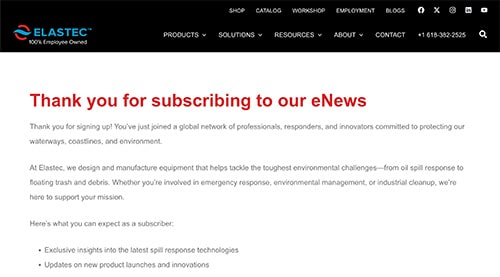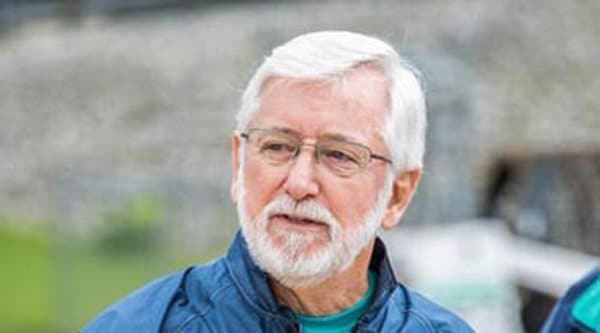How Are Containment Booms Deployed and What Equipment is Required?
When an oil spill occurs, time is critical. The faster responders can deploy an oil containment boom, the greater the chance of minimizing environmental damage and recovery costs. But deploying a boom is more than simply laying a barrier in the water — it requires careful planning, specialized equipment, and trained personnel. Elastec, a global leader in oil spill response equipment, has developed innovative tools like the BoomVane and Boom Reels to make this process faster, safer, and more efficient.
Step 1: Planning and Site Assessment
Every boom deployment begins with a plan. Responders must consider environmental factors such as wind, wave action, currents, and tides before deciding where and how to deploy. A comprehensive anchoring or mooring plan is created to ensure the boom will stay in place under expected conditions.
Key considerations include:
- Current speed and direction: Strong currents may require deflection or cascade boom configurations.
- Wave height: High seas require more robust boom designs with greater freeboard and ballast.
- Tidal range: Anchor placement must account for changing water levels. Tidal Compensators can be used to provide a solid seal against a seawall or piling that adjusts with the tidal changes.
- Shoreline conditions: Natural tie-off points (such as pilings or rocks) may be available, reducing the need for anchors.
Step 2: Assembling the Boom
Once the plan is finalized, responders assemble the boom either onshore or on the deck of a vessel. Most modern booms, including Elastec’s models, feature aluminum end connectors that are quickly secured with toggle pins, allowing responders to create the desired length.
A tow bridle is then attached to the leading end. This is a crucial component — it distributes the towing force evenly along the boom, preventing damage and prolonging its lifespan.
Step 3: Towing and Positioning
The assembled boom is gently towed into position by one or more vessels. In some cases, portable systems can be deployed directly from the shoreline. Elastec’s BoomVane allows for boom deployment from a single vessel or even from shore. By harnessing river or tidal currents, the BoomVane spreads and positions the boom without the need for a second boat — a major advantage when boats are not available or the water depth is too shallow for boat operations.
Step 4: Anchoring and Securing
Once the boom is in place, it must be secured to keep it from drifting. If stationary tie-off points (like piers, pilings, or shoreline stakes) are not available, responders use anchor kits consisting of Terra Twist, Danforth-style or pyramid anchors, chains, ropes, and buoys.
Anchor placement is critical — too much slack can allow the boom to drift, while too much tension can cause it to fail under load. Proper anchoring ensures the boom maintains its intended shape.
Step 5: Advanced Configurations for Challenging Conditions
Certain spills require specialized strategies:
- Deflection booming redirects oil toward a recovery point.
- Chevron or V-shaped booming funnels oil into a central collection area for skimming.
- Cascade booming uses multiple shorter boom segments in series to manage strong currents or allow vessel traffic to pass.
These configurations highlight why strategic planning and skilled execution are so important for successful containment. Various boom deployment methods with opportunities for hands-on experience are also covered at Elastec’s annual workshop.
Equipment That Simplifies Deployment
Modern oil spill response demands speed, portability, and efficiency. Elastec’s product line reflects these priorities:
- Elastec Boom Reels: These powered reels allow for rapid deployment and retrieval of hundreds of feet of boom. They can be mounted on trailers, docks, or vessels, making them ideal for large-scale operations.
- Elastec BoomVane: Perfect for use in rivers, tidal waters, and harbors, the BoomVane enables single-vessel or shore-based deployment, reducing labor and equipment costs.
By combining these innovations with solid planning and proper anchoring, responders can dramatically cut deployment times and improve containment outcomes.
Deploying an oil containment boom is a coordinated process that blends planning, equipment, and expertise. From developing a mooring plan to using tools like Elastec’s BoomVane and Boom Reels, each step is designed to maximize efficiency and minimize environmental damage. With modern innovations making deployment faster and safer, responders are better equipped than ever to protect waterways from oil spills.
Connect With Us
Sign up for our newsletters to receive the latest news and product information from Elastec.


